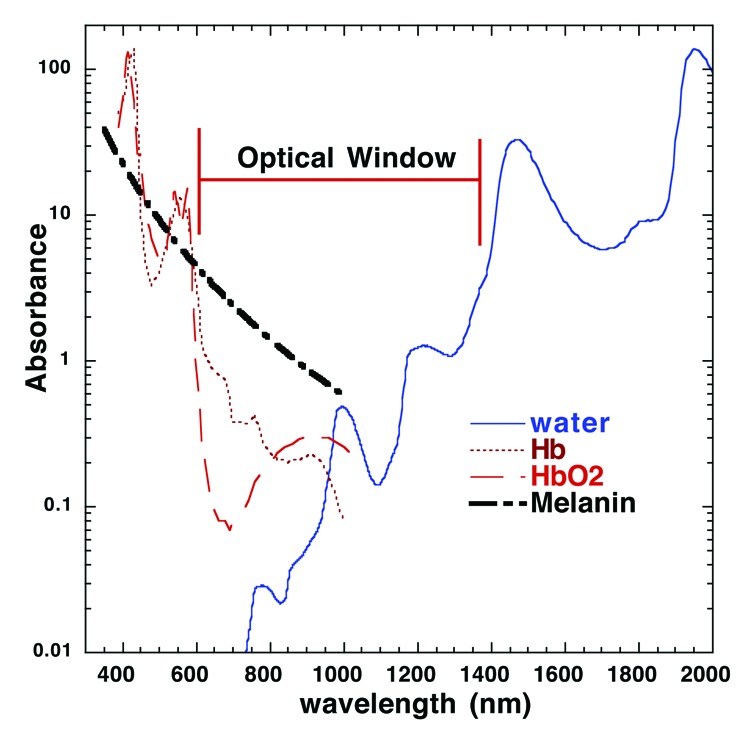
Figure 3. Absorption spectrum for major skin chromophores and the optical window. Light absorption in the skin is wavelength dependent. In the UV to near infrared portion of the spectrum, the predominant tissue chromophores are hemoglobin, melanin, and water. The absorption coefficients for both melanin and hemoglobin decline significantly after 600 nm and water does not increase significantly until after 1200 nm. This creates an “optical window” at red and near-IR wavelengths that maximizes penetration of light into the skin. Note that the 1064 nm NIR laser adjuvant is within the window whereas 510/578 or 532 nm pulsed laser adjuvants are not. Hb, hemoglobin; HbO2, oxygenated hemoglobin. Figure courtesy of Dr Michael Hamblin (Massachusetts General Hospital).
